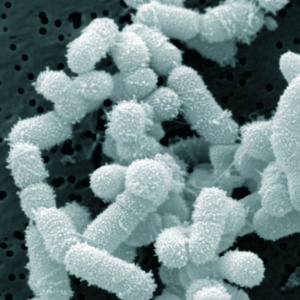 It's official. This month is 5 whole years being free of chronic sinusitis and off all antibiotics! Yes, that's correct - 5 whole years for all 4 family members, and our sinuses feel great!
It's official. This month is 5 whole years being free of chronic sinusitis and off all antibiotics! Yes, that's correct - 5 whole years for all 4 family members, and our sinuses feel great!
Back in February 2013 - first I, and then the rest of my family, started using easy do-it-yourself sinusitis treatments containing the probiotic (beneficial bacteria) Lactobacillus sakei. Now we only treat with a L. sakei product when occasionally needed - and it still works great. In fact, the best way to use Lactobacillus sakei is to use only when there are sinusitis symptoms, and not when feeling well. The whole process still feels miraculous.
After reading the original ground-breaking research on sinusitis done by Abreu et al (2012), it led to me trying L. sakei as a sinusitis treatment. Of course, there is an entire community of microbes (bacteria, fungi, viruses) that live in healthy sinuses - the sinus microbiome - but L. sakei seems to be a key one for sinus health. Since that original 2012 study, other studies have also found that in people with chronic sinusitis, the sinus microbial community is out of whack (dysbiosis).
The one thing different this past year is that our sinus microbial community (sinus microbiome) seems better. If we need to treat (for example, after a virus that goes into sinusitis, or when sliding toward sinusitis for whatever reason), then all four of us noticed that we need to use much less of a product than in the past. Incredibly little. So it seems that our sinus microbial community has definitely improved over time.
The post The One Probiotic That Treats Sinusitis (originally posted January 2015 and with many updates since then) contains information using my family's experiences (lots of self-experimentation!) and all the information that people have given me over the years. Thanks everyone! The post has a list of brands and products with L. sakei, treatment results, as well as information about some other promising probiotics (beneficial bacteria).
Thank you all who have contacted me - whether publicly or privately. Please keep writing and tell me what has worked or hasn't worked for you as a sinusitis treatment. If you find another bacteria or microbe or product that works for you - please let me know. It all adds to the sinusitis treatment knowledge base. I will keep posting updates.
(NOTE: I wrote our background story - Sinusitis Treatment Story back in December 2013, there is a Sinusitis Treatment Summary page with the various treatment methods quickly discussed, and the latest information on The Best Probiotic For Sinus Infections. One can also click on SINUSITIS under CATEGORIES to see more posts about what is going on in the world of sinusitis research.)

Here is a post on pasteurized sauerkraut. http://www.theelitetrainer.com/blog.cfm?pid=-390.
The poster notes that pasteurized sauerkraut is missing the good cultures and can be reinoculated.
I looked for information on pasteurized kimchi, and see that some is, and some isn't. Checking with the manufacturer might provide information.
Could this be a factor in getting kimchi with live cultures?
Thanks for getting out this information. I got to your site after reading Dr. Bredesen's book The End Of Alzeimers, where he mentions the importance of a good nasal biome, especially for rhinitis sufferers. Myself and several family members share this condition.
Studies show that sauerkraut generally doesn't contain Lactobacillus sakei (which has been so important in treating sinusitis), but some people have been reporting that sauerkraut made with garlic does.
In kimchi, it is thought that garlic (and to a lesser degree leeks) are important for L. sakei to occur during fermentation.
Live fermented kimchi and sauerkraut are found in the refrigerated section of some grocery and health food stores. They generally advertise that they are "live" products.
Manufacturers generally do NOT know if L. sakei is in their product because it arises spontaneously at certain times during fermentation - it is not added deliberately.